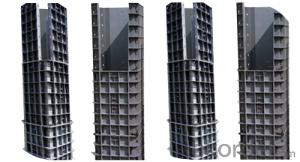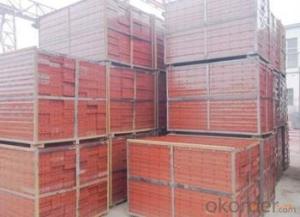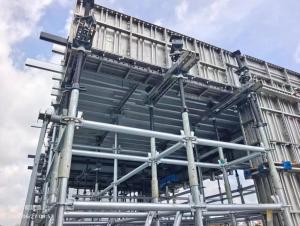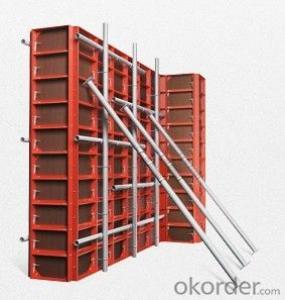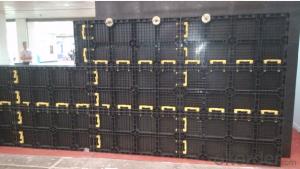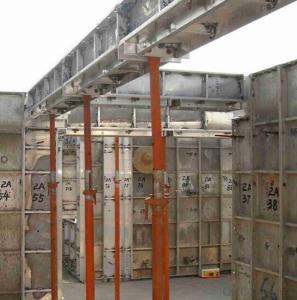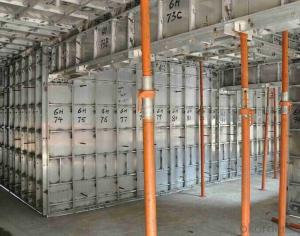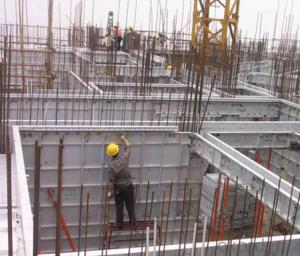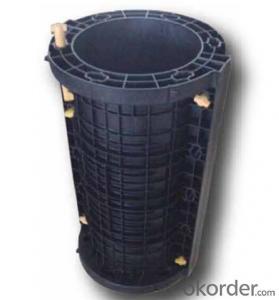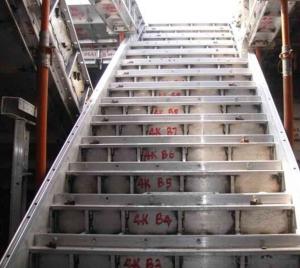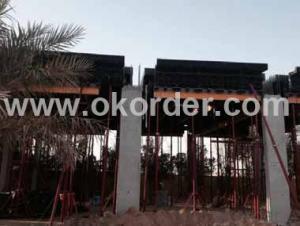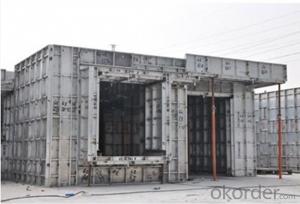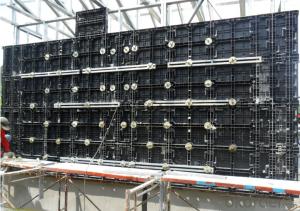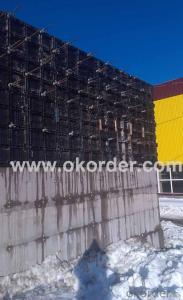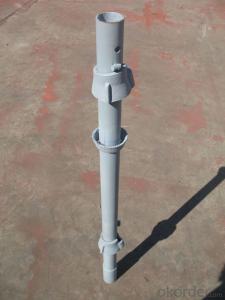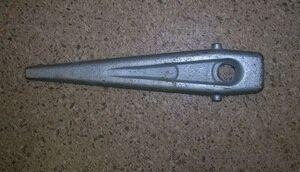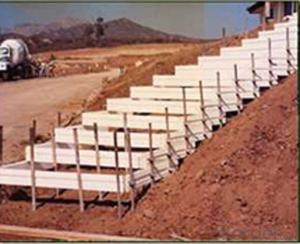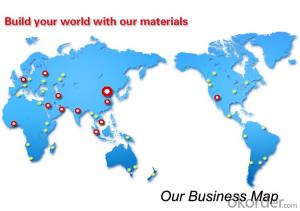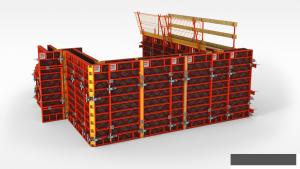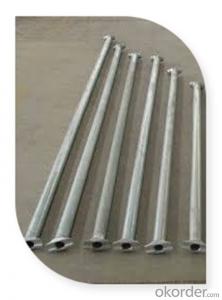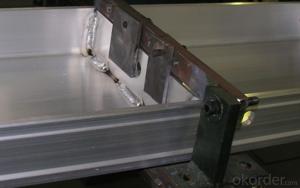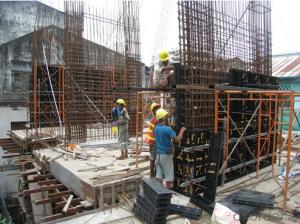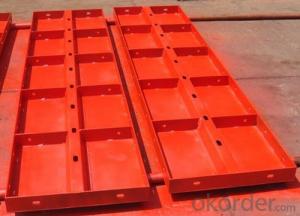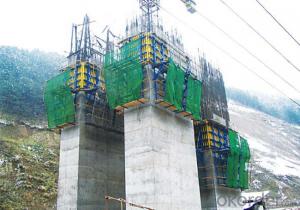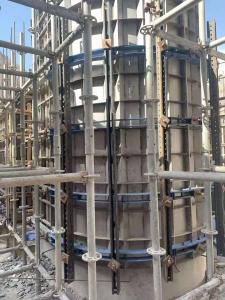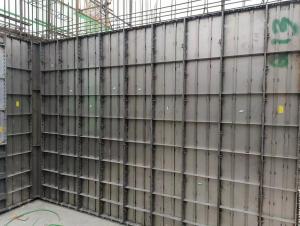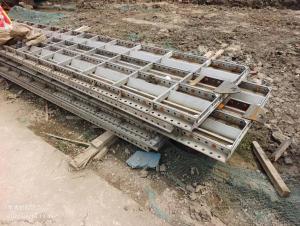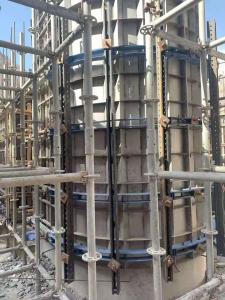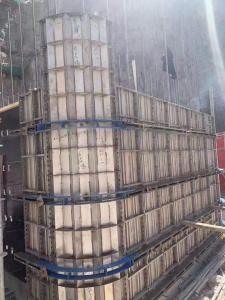Concrete Formwork System
Concrete Formwork System Related Searches
Concrete Formwork Plywood Concrete Pit FormworkHot Searches
Concrete Formwork System Supplier & Manufacturer from China
Okorder.com is a professional Concrete Formwork System supplier & manufacturer, offers integrated one-stop services including real-time quoting and online cargo tracking. We are funded by CNBM Group, a Fortune 500 enterprise and the largest Concrete Formwork System firm in China.Hot Products
FAQ
- Steel formwork is a flexible and long-lasting material that effectively handles various levels of concrete workability. Workability refers to how easily concrete can be mixed, placed, compacted, and finished. When dealing with different workability levels in concrete, steel formwork offers several advantages. Firstly, its sturdy and rigid structure can withstand the pressure exerted by concrete during pouring and compaction. This ensures that the formwork remains stable and does not deform or collapse under the weight of the concrete. Furthermore, steel formwork provides a smooth and uniform surface for the concrete, regardless of its workability. This is crucial for achieving a high-quality finish and minimizing defects like honeycombing or uneven surfaces. The smoothness of steel formwork allows for easy and efficient removal, ensuring that the concrete retains its shape and integrity. Moreover, steel formwork can be easily customized and adjusted to accommodate different workability levels. Its modular nature allows for easy assembly and disassembly, making it suitable for various construction projects and types of concrete. Steel formwork can be adjusted to fit changes in concrete consistency, ensuring that the formwork remains tight and secure. This adaptability is particularly beneficial when working with concrete mixes that have different slump values or consistencies. Another advantage of steel formwork is its reusability. Unlike other forms of formwork, such as wood or plastic, steel formwork can be used multiple times without compromising its structural integrity. This not only reduces construction costs but also allows for efficient handling of concrete with different workability levels. Steel formwork can be easily cleaned, repaired, and reused, making it a cost-effective and sustainable choice for handling various levels of concrete workability. In conclusion, steel formwork provides a dependable and flexible solution for handling different levels of concrete workability. Its strength, smoothness, adjustability, and reusability make it an ideal choice for ensuring the stability, quality, and efficiency of concrete construction projects.
- Indeed, steel formwork serves as a practical option for both temporary and permanent structures. With its versatility and durability, steel formwork proves capable of withstanding high pressures, rendering it suitable for a range of construction projects. In the case of temporary structures, such as construction sites or temporary shelters, steel formwork presents an expedient and effective solution due to its easy assembly and disassembly. Furthermore, it finds utmost suitability in permanent structures such as bridges, high-rise buildings, or industrial facilities, where strength and durability are of utmost importance. Moreover, steel formwork's reusability adds to its appeal, rendering it a cost-effective choice for temporary and permanent construction endeavors alike.
- The overall construction site logistics can be significantly impacted by steel formwork. Firstly, the durability and strength of steel formwork allow for multiple reuses, reducing the need for constant replacement and disposal of materials. This results in reduced waste generation and improved site cleanliness. Moreover, steel formwork is lightweight and easily adjustable, making it easier to handle and transport around the construction site. This improves material handling efficiency and reduces the time required for installation and removal of formwork. Additionally, the lightweight nature of steel formwork reduces the load on the structure, leading to reduced transportation costs and improved safety during construction. Furthermore, steel formwork offers high dimensional accuracy, ensuring precise and consistent shapes for concrete elements. This helps streamline the construction process by reducing the need for excessive adjustments and rework, resulting in improved time management and increased productivity. Additionally, steel formwork provides a smooth and even finish to concrete structures, eliminating the need for additional surface treatments and reducing the time and effort required for finishing work. In summary, steel formwork contributes to improved construction site logistics by reducing waste, enhancing material handling efficiency, improving construction speed, and ensuring high-quality finishes. Its durability, lightweight nature, and dimensional accuracy make it a valuable asset in optimizing construction processes and achieving project timelines more effectively.
- Steel formwork is a versatile option that is capable of accommodating different concrete surface gloss levels effectively. It provides a smooth and even surface for concrete placement, allowing the desired finish to be achieved. Additionally, steel formwork is durable and can withstand the pressures and forces exerted by the concrete, ensuring that the surface gloss remains consistent throughout the curing process.
- Enhancing functionality and efficiency, steel formwork systems utilize various common accessories and attachments. These include: 1. Securing the steel formwork panels together, formwork clamps offer stability and prevent any movement during concrete pouring. 2. Connecting the steel formwork panels and maintaining their desired position, formwork ties evenly distribute pressure to prevent bulging or deformation. 3. Providing additional strength and stability, adjustable steel props support the weight of the formwork and freshly poured concrete, ensuring proper alignment and preventing collapse. 4. Attaching the formwork to existing structures or creating additional support, formwork brackets help maintain desired shape and stability during concrete pouring. 5. Enabling sharp corners and angles in the formwork, formwork corners ensure accurate concrete pouring and shape preservation. 6. Maintaining proper spacing between formwork panels, formwork spacers ensure even and uniform concrete pouring for a smooth finish. 7. Preventing concrete from sticking to steel panels, formwork release agents are applied to the formwork surface for easy removal after concrete curing. 8. Ensuring level and proper alignment of the formwork, formwork leveling devices contribute to a consistent and uniform concrete finish. In summary, these essential accessories and attachments are pivotal in successfully implementing steel formwork systems. They improve structural integrity, enhance efficiency, and guarantee high-quality finishes for constructed concrete structures.
- Indeed, special equipment is needed for the installation of steel formwork. To install it, one must assemble the steel panels into the desired shape and fasten them together. This typically entails utilizing specific tools like spanners, hammers, or hydraulic jacks to guarantee proper alignment and tightness of the formwork. Furthermore, robust lifting equipment such as cranes or forklifts might be required to safely transport and position the steel formwork panels. By employing specialized equipment, one can ensure the installation is conducted with precision and effectiveness, ultimately yielding a durable and expertly constructed formwork system.
- There are several types of safety systems used with steel formwork, including guardrails, safety nets, edge protection systems, fall arrest systems, and personal protective equipment (PPE). These systems are designed to prevent falls, provide barriers against hazardous areas, and protect workers from potential accidents or injuries while working with steel formwork.
- Steel formwork contributes to the overall accuracy of concrete placement in several ways. First and foremost, steel formwork provides a rigid and stable structure that ensures the concrete is poured and cured in the desired shape and dimensions. The steel panels are designed to be strong and resistant to deformation, which minimizes the risk of the formwork shifting or warping during the pouring process. Furthermore, steel formwork allows for precise control over the alignment and leveling of the formwork. The panels can be easily adjusted and secured in place, ensuring that the concrete is poured at the intended level and alignment. This is particularly important for projects that require a high level of accuracy, such as those involving intricate architectural designs or where precise measurements are critical. Additionally, steel formwork offers the advantage of reusability. Unlike traditional wooden formwork, which can only be used a limited number of times, steel formwork can be used repeatedly without compromising its structural integrity. This reusability factor contributes to cost-effectiveness and allows for consistent accuracy in concrete placement throughout multiple projects. Moreover, the smooth surface of steel formwork helps to achieve a high-quality finish on the concrete surface. The smoothness of the steel panels minimizes the risk of surface imperfections and ensures a consistent texture and appearance. This is particularly important for projects where the concrete will be left exposed, such as architectural features or decorative elements. In conclusion, steel formwork plays a crucial role in ensuring the overall accuracy of concrete placement. Its rigidity, adjustability, reusability, and smooth surface contribute to achieving precise dimensions, alignment, and finish, making it an indispensable tool for construction projects that require high levels of accuracy and quality.

